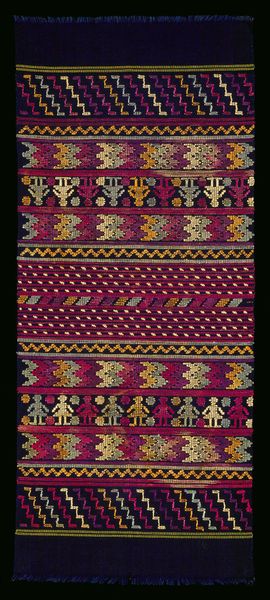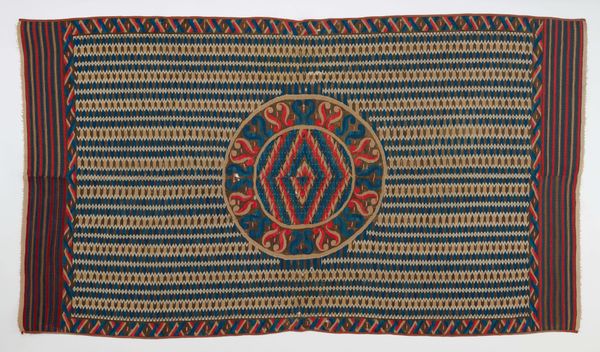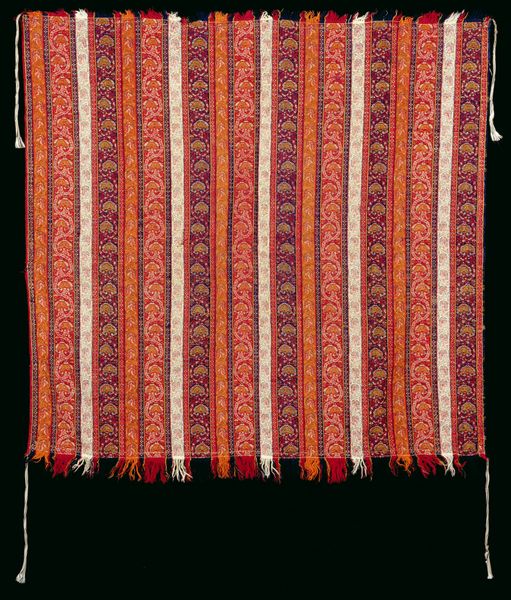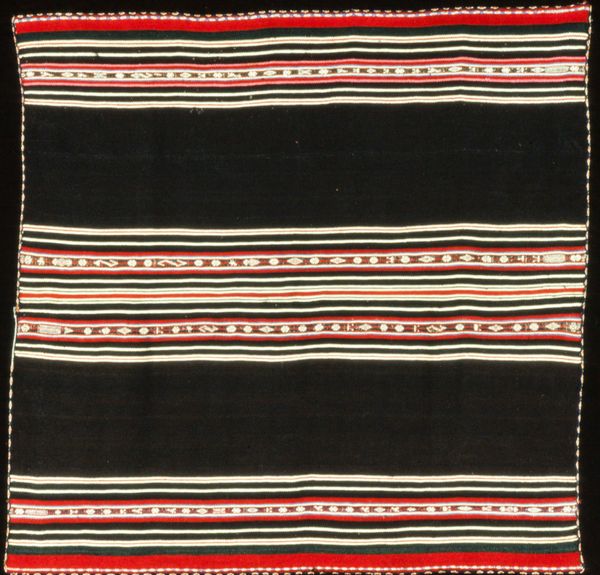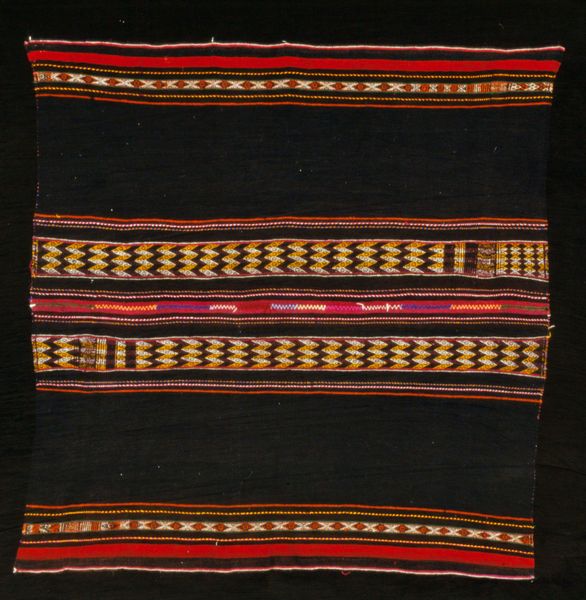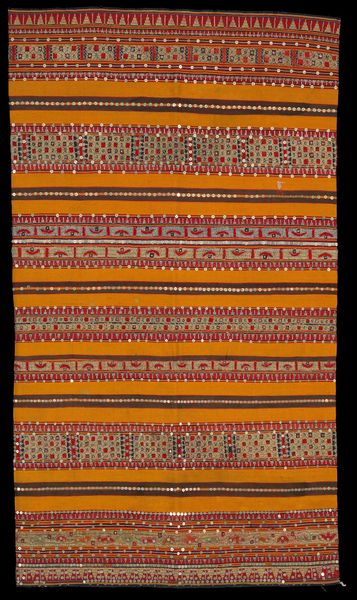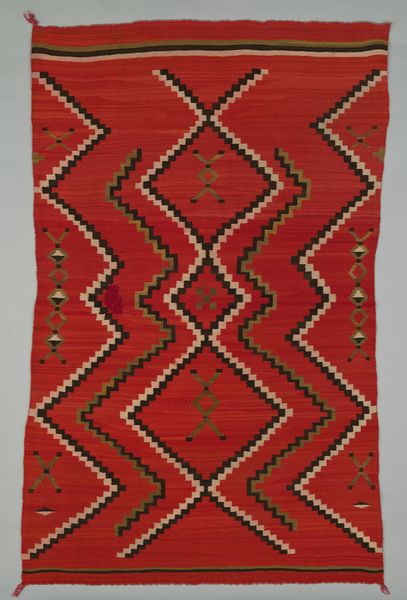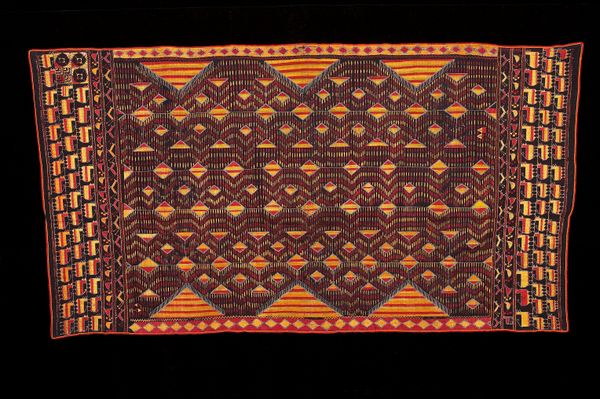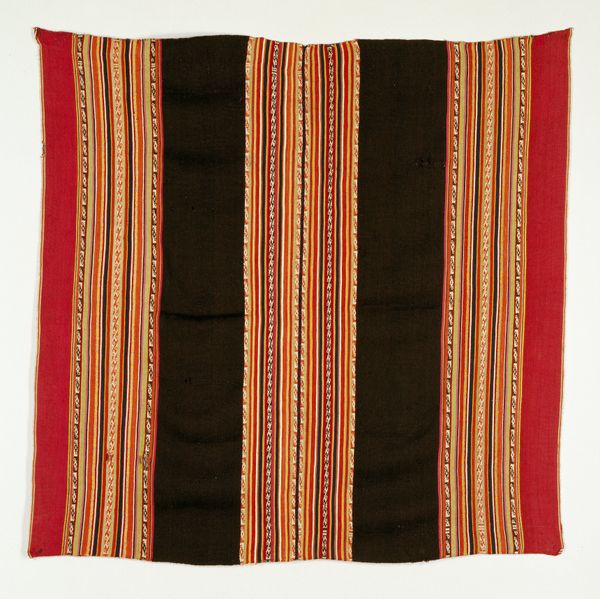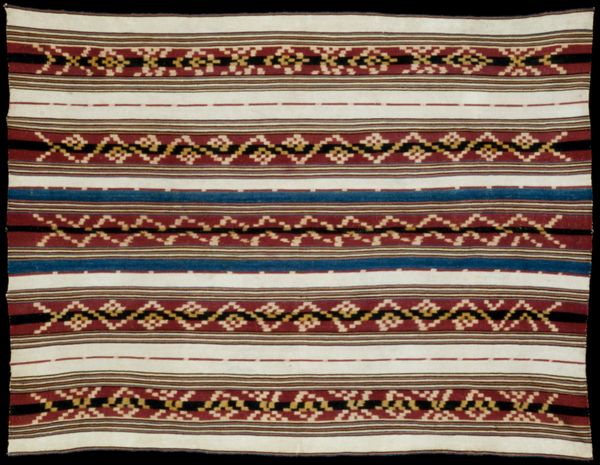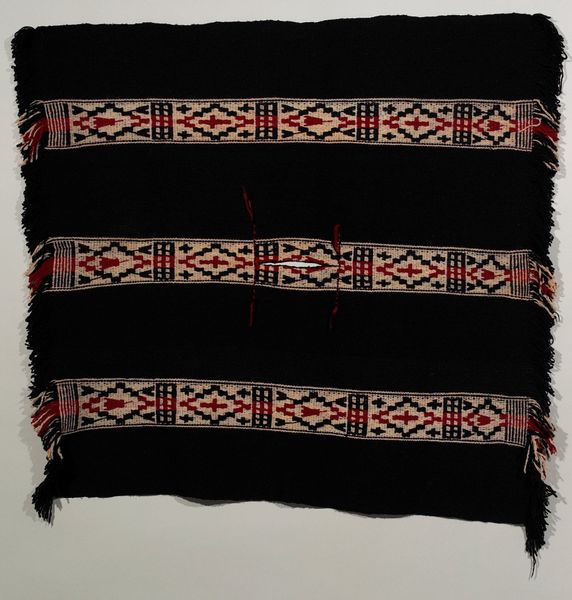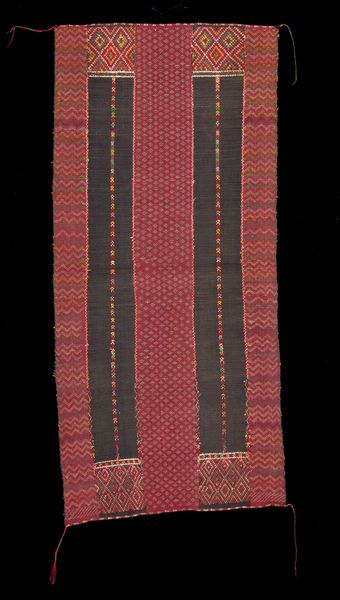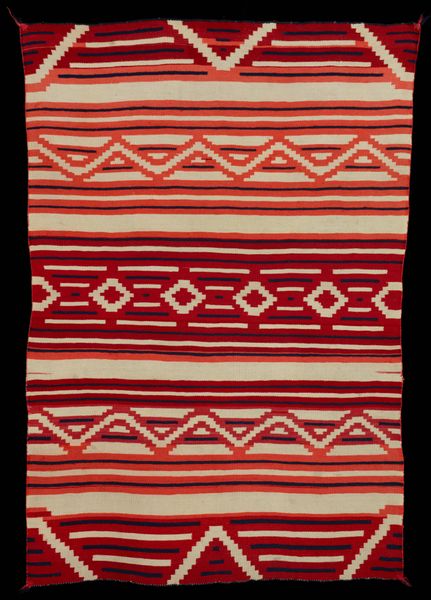
fibre-art, weaving, textile
#
natural stone pattern
#
fibre-art
#
weaving
#
textile
#
geometric pattern
#
abstract pattern
#
repetitive shape and pattern
#
organic pattern
#
geometric
#
repetition of pattern
#
pattern repetition
#
imprinted textile
#
layered pattern
#
combined pattern
#
indigenous-americas
Dimensions: 57 1/2 x 53 1/2 in. (146.1 x 135.9 cm)
Copyright: Public Domain
Curator: Here we have a “Poncho” from the Mapuche people, likely made sometime in the 19th or early 20th century. It’s a textile made from wool. Editor: Immediately I think, warmth, protection…it feels sturdy. Visually, those geometric patterns—diamonds linked by ladder-like shapes—are so arresting against that deep indigo ground. Curator: The indigo itself is significant. Natural dyes, particularly indigo, would have been incredibly valuable, demonstrating the weaver’s access to trade networks, or complex local production, impacting its ultimate status as an object. Editor: True. But consider also the incredible patience required. It's like meditative math; each small woven square a testament to mindful labour. I imagine someone humming softly as their fingers flew, translating thoughts into tangible form. Curator: Absolutely, we should understand that such work wasn’t simply functional, providing warmth and protection. The designs and materials can communicate social status, familial identity, and adherence to cultural traditions. And these designs probably carry profound symbolic meaning within the Mapuche community. Editor: Looking closer, the central slit feels…vulnerable. Like an open mouth in a masked face. Almost unsettling amidst the ordered geometry, creating a unique personality in what appears a rigorously repetitive work. Curator: Good point. And given the central placement, and careful finish, the neck slit's positioning would have been key to how the poncho draped on the body. A practical concern, of course, but integral to how the wearer would have presented to others. Editor: So it's both pragmatic and performative, then! The artist, if you like, is using every opportunity to integrate function and aesthetics to enhance meaning, and express some profound social-spiritual vision. Curator: Indeed, it’s through the very means of its production—the materials, the labor, the trade networks, its utilitarian function—that we understand the poncho’s place within Mapuche culture and its broader context. Editor: A warm, wearable theorem…fascinating. Curator: A poignant summation.
Comments
No comments
Be the first to comment and join the conversation on the ultimate creative platform.
